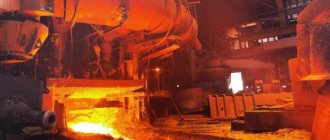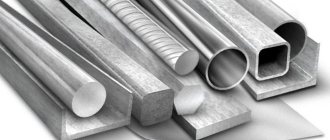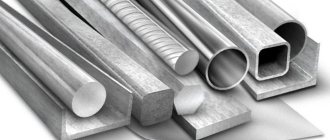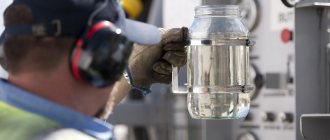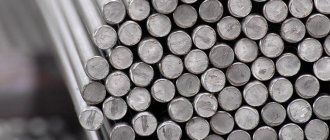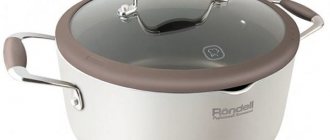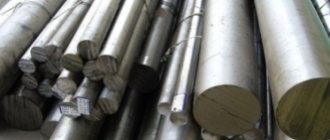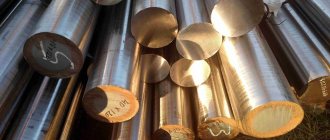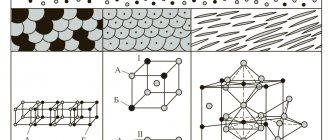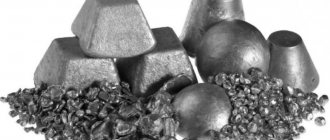Today there is almost no area of human life where cast iron is not used. This material has been known to mankind for quite a long time and has proven itself excellently from a practical point of view. Cast iron is the basis for a great variety of parts, assemblies and mechanisms, and in some cases even a self-sufficient product capable of performing the functions assigned to it. Therefore, in this article we will pay close attention to this iron-containing compound. We will also find out what types of cast iron there are, their physical and chemical characteristics.
Definition
Cast iron is a truly unique alloy of iron and carbon, in which Fe is more than 90%, and C is no more than 6.67%, but not less than 2.14%. Carbon can also be present in cast iron in the form of cementite or graphite.
Carbon gives the alloy a fairly high hardness, however, at the same time, it reduces malleability and ductility. In this regard, cast iron is a brittle material. Also, special additives are added to certain brands of cast iron, which can give the compound certain properties. Alloying elements can be: nickel, chromium, vanadium, aluminum. The density of cast iron is 7200 kilograms per cubic meter. From which we can conclude that the weight of cast iron is an indicator that cannot be called small.
Compound
What is cast iron? It is an alloy of iron, carbon and various impurities, thanks to which it acquires the necessary properties. The material must contain at least 2.14% carbon. Otherwise, it will be steel, not cast iron. It is thanks to carbon that cast iron has increased hardness. At the same time, this element reduces the ductility and malleability of the material, making it brittle.
In addition to carbon, cast iron necessarily includes: manganese, silicon, phosphorus and sulfur. Some brands also contain additional additives to give the material specific properties. Commonly used alloying elements include chromium, vanadium, nickel and aluminum.
Historical reference
Iron smelting has been known to man for quite some time. The first mention of the alloy dates back to the sixth century BC.
In ancient times, cast iron was produced in China with a fairly low melting point. In Europe, cast iron began to be produced around the 14th century, when blast furnaces were first used. At that time, such cast iron was used for the production of weapons, shells, and parts for construction.
In Russia, cast iron production began actively in the 16th century and then rapidly expanded. During the time of Peter I, the Russian Empire was able to surpass all the countries of the world in terms of pig iron production, but after a hundred years it began to lose its position in the ferrous metallurgy market again.
Iron casting was used to create a variety of works of art back in the Middle Ages. In particular, in the 10th century, Chinese craftsmen cast a truly unique figure of a lion, whose weight exceeded 100 tons. Starting from the 15th century in Germany, and then in other countries, cast iron casting became widespread. Fences, trellises, park sculptures, garden furniture, and tombstones were made from it.
In the last years of the 18th century, cast iron was used to the maximum in Russian architecture. And the 19th century was generally nicknamed the “cast iron age”, since the alloy was very actively used in architecture.
Peculiarities
There are different types of cast iron, but the average melting point of this metal compound is about 1200 degrees Celsius. This figure is 250-300 degrees less than what is required for steel smelting. This difference is due to the fairly high carbon content, which leads to less close bonds with iron atoms at the molecular level.
At the time of smelting and subsequent crystallization, the carbon contained in the cast iron does not have time to completely penetrate the molecular lattice of the iron, and therefore the cast iron ends up being quite brittle. In this regard, it is not used where constant dynamic loads occur. But at the same time, it is excellent for those parts that have increased strength requirements.
Features of receiving
When producing white cast iron, it is important to exclude the graphitization process during crystallization of the melt, which is done:
- optimal selection of starting substances;
- technology for cooling the alloy in molds.
The degree of wear resistance of castings is largely determined by the nature and composition of carbides. Alloying the metal with nickel, manganese and chromium gives a martensitic carbide structure. When their total concentration is equal to the carbon content, the hardest structure is formed.
Most often, chromium is used as the main alloying additive. It gives the alloy high corrosion resistance, which is maintained even in aggressive environments. After normalization, these blanks are resistant to acids at temperatures up to 1000 degrees. Additional alloying with nickel (0.1%), titanium (0.5%) and copper (0.5-2.0%) gives the parts the ability to maintain their geometric shape and original dimensions under prolonged heating conditions.
First stage of production
Iron smelting occurs as follows. First of all, ore is poured into the furnace, as well as coking coal grades, which serve to pump and maintain the required temperature inside the furnace shaft. In addition, during the combustion process, these products actively take part in the ongoing chemical reactions as iron reducers.
At the same time, flux is loaded into the furnace, serving as a catalyst. It helps the rocks melt faster, which promotes the rapid release of iron.
It is important to note that the ore undergoes special pre-treatment before loading into the furnace. It is crushed in a crushing plant (small particles melt faster). Afterwards it is washed to remove particles that do not contain metal. After which the raw material is fired, due to this, sulfur and other foreign elements are removed from it.
Second stage of production
Natural gas is supplied to the loaded and ready-to-use furnace through special burners. Coke heats the raw material. This releases carbon, which combines with oxygen to form an oxide. This oxide subsequently takes part in the reduction of iron from the ore. Note that as the amount of gas in the furnace increases, the rate of the chemical reaction decreases, and when a certain ratio is reached, it stops altogether.
Excess carbon penetrates the melt and combines with iron, ultimately forming cast iron. All those elements that have not melted end up on the surface and are eventually removed. This waste is called slag. It can also be used to produce other materials. The types of cast iron obtained in this way are called foundry and conversion.
White cast iron
Such cast iron is one in which almost all of the carbon is chemically bonded. This alloy is not used very often in mechanical engineering because it is hard but very brittle. It is also not amenable to machining with various cutting tools, and therefore is used for casting parts that do not require any processing. Although this type of cast iron can be grinded with abrasive wheels. White cast iron can be either ordinary or alloyed. At the same time, welding it causes difficulties, since it is accompanied by the formation of various cracks during cooling or heating, and also due to the heterogeneity of the structure formed at the welding point.
White wear-resistant cast iron is obtained due to the primary crystallization of the liquid alloy during rapid cooling. They are most often used for work under dry friction conditions (for example, brake pads) or for the production of parts with increased wear resistance and heat resistance (rolls of rolling mills).
By the way, white cast iron got its name due to the fact that the appearance of its fracture is a light crystalline, radiant surface. The structure of this cast iron is a combination of ledeburite, pearlite and secondary cementite. If this cast iron is subjected to alloying, then pearlite is transformed into troostite, austenite or martensite.
White
This alloy is characterized by the content of excess carbon in the form of carbide or cementite. The name of this species was given for the white color at the fracture site. The carbon content in such cast iron usually exceeds 3%. White cast iron is highly brittle and brittle, so its use is limited. This type is used for the production of parts of a simple configuration that perform static functions and do not bear heavy loads.
By adding alloying additives to white cast iron, it is possible to increase the technical parameters of the material. For this purpose, chromium or nickel is most often used, less often vanadium or aluminum. A brand with this kind of additives is called “sormite”. It is used in various devices as a heating element. “Sormite” has a high resistivity and works well at temperatures no higher than 900 degrees. The most common use of white cast iron is in the production of household bathtubs.
Half cast iron
The classification of cast iron will be incomplete without mentioning this type of metal alloy.
This cast iron is characterized by a combination of carbide eutectic and graphite in its structure. In general, the full structure has the following form: graphite, pearlite, ledeburite. If cast iron is subjected to heat treatment or alloying, this will lead to the formation of austenite, martensite or acicular troostite.
This type of cast iron is quite fragile, so its use is very limited. The alloy received its name because its fracture is a combination of dark and light areas of the crystalline structure.
The most common engineering material
Gray cast iron GOST 1412-85 contains about 3.5% carbon, from 1.9 to 2.5% silicon, up to 0.8% manganese, up to 0.3% phosphorus and less than 0.12% sulfur.
The graphite in this cast iron has a lamellar shape. No special modification is required.
Graphite plates have a strong weakening effect and therefore gray cast iron is characterized by very low impact strength and an almost complete absence of elongation (the figure is less than 0.5%).
Gray cast iron is easy to machine. The alloy structure can be as follows:
- Ferrite-graphite.
- Ferrite-pearlite-graphite.
- Perlite-graphite.
Gray cast iron works much better in compression than in tension. It also welds quite well, but this requires preheating, and special cast iron rods with a high silicon and carbon content must be used as filler material. Without preheating, welding will be difficult because the cast iron will bleach in the weld area.
Gray cast iron is used to produce parts that operate under no shock load (pulleys, covers, frames).
The designation of this cast iron is based on the following principle: SCh 25-52. Two letters indicate that this is gray cast iron, the number 25 is an indicator of the tensile strength (in MPa or kgf/mm2), the number 52 is the tensile strength at the moment of bending.
Foundry gray cast iron
Foundry gray cast iron got its name due to its high casting properties (fluidity and low shrinkage), as well as due to its dark gray color. At the fracture it has a coarse-grained structure. Soft, easy to cut. The hardness of cast gray cast iron is 140 ... 260 HB. Tensile strength σв 100…450 MPa (10…45 kgf/mm2). Relative elongation δ 0.2 ... 0.5%. In the domestic mechanical engineering industry, up to 74% of all critical castings are produced from foundry gray cast iron. Based on their microstructure, gray cast irons are divided into ferrite-graphite, ferrite-pearlite and pearlite (Fig. 2). The carbon in these cast irons is in a free state in the form of graphite. The greater the mass fraction of carbon, the greater the graphite structure in gray cast iron and the lower its mechanical properties, therefore the maximum carbon content is limited to its hypoeutectic limits, i.e., no more than 4%, but practically up to 3.7%.
Reducing the carbon content reduces its castability. In this regard, a lower limit on the mass fraction of carbon is set. It is approximately 2.2%. The lower limit is accepted for thick-walled castings, the upper limit for thin-walled ones.
Blast furnace shops produce gray cast iron in the form of pigs, which are supplied to the foundries of machine-building plants.
Cast gray iron consists of iron, carbon, and other chemical elements, and therefore is not a two-component alloy. In addition to carbon, it contains silicon, manganese, sulfur and phosphorus. Silicon and manganese influence the graphitization process, microstructure formation, and mechanical and technological properties of gray iron castings.
Carbon affects the properties of cast iron depending on the form of the connection with iron, i.e., on the structure that is formed in the alloy. The formation of structures is collectively influenced by the melting and cooling conditions, as well as the presence of accompanying chemical elements: manganese, silicon and, slightly, sulfur and phosphorus. Silicon with a mass fraction of 3 ... 5% in gray cast iron promotes the release of carbon in the form of graphite. By changing the mass fraction of silicon, it is possible to obtain castings with different structures, and with changes in the structure, the mechanical properties of cast iron also change. For example, cast iron with a structure in the form of lamellar graphite has a relative elongation δ = 0.2 ... 1.1%, and cast iron with a flake-shaped graphite structure has a relative elongation δ = 5 ... 10%. Silicon promotes the formation of the microstructure of graphite, gives cast iron a number of valuable mechanical, technological and operational properties, and improves machinability. In addition, graphite inclusions (porous, soft) quickly dampen vibrations and vibrations and disperse shock loads throughout the mass of load-bearing parts. Cast iron parts are insensitive to mechanical damage. Due to the graphite structure, gray cast iron has high anti-friction properties. In this case, the graphite acts as a lubricant. Due to the listed properties, silicon is a constant and essential element in foundry gray cast irons.
Rice. 2. Microstructures of cast gray cast irons: a - ferritic-graphite; b - ferrite-pearlite; c - pearlitic
Manganese prevents the graphitization of cast iron, whitens it, promotes the formation of a crushed perlite structure (ferrite + cementite), improving mechanical properties. The mass fraction of manganese in gray cast iron ranges from 0.2 ... 1.1%, while strength, wear resistance and hardness increase. With a higher manganese content, the structure of pearlite and ferrite decreases, the structure of cementite increases, and cast iron becomes hard but brittle.
Sulfur is a harmful impurity. It has a negative effect on the mechanical and casting properties of gray cast iron, reduces fluidity, increases shrinkage, and promotes the formation of cracks. The mass fraction of sulfur for small castings is 0.08%, for large castings, which do not require increased fluidity, 0.10 ... 0.12%.
Phosphorus in foundry cast iron is a useful admixture, as it increases fluidity. In addition, phosphorus promotes the formation of a structure that increases the overall hardness and wear resistance of castings. A high phosphorus content (up to 0.7%) increases the cold resistance of cast iron, therefore, in castings operating under loads, the mass fraction of phosphorus can reach 0.3%, and in castings operating without loads (art and household castings) - 0.7 %.
Phosphorus has no effect on the formation of microstructure and graphitization. In practice, using structural diagrams, depending on the mass fraction of carbon and silicon in cast iron, its approximate microstructure in castings with a wall thickness of 50 mm is determined.
According to GOST 1412-87, there are the following grades of gray cast iron: SCh10, SCh15, SCh18, SCh20, SCh21, SCh24, SCh25, SCh30, SCh35, SCh40 and SCh45, where the letters SCh mean foundry gray cast iron, and the numbers indicate tensile strength. For example, cast iron grade SCh15 has a tensile strength of 150 MPa (15 kgf/mm2).
Thus, casting gray cast irons have high mechanical properties (σв - up to 450 MPa (45 kgf/mm2) and also high technological properties (casting properties, machinability, etc.). In addition, as already noted, casting gray cast iron has the ability dampen and dissipate vibrations and loads. This property is called the damping property. It is widely used in machine tool construction. From gray cast iron, which has a damping property, the beds of machine tools, machines and other supporting structures are cast, which allow creating the accuracy and rigidity of the machine-device-tool system - detail (AIDS).
The main technological properties are high fluidity and machinability. Gray cast iron castings lend themselves well to processing on various metal-cutting machines: turning, milling, planing, drilling, grinding and scraping. Due to the wide range of mechanical properties (strength and hardness), this cast iron is used in various sectors of the economy. For example, low-grade gray cast iron is used for the manufacture of castings that operate without loads (household and artistic castings, weights, stands, covers, plugs, plates, flanges, etc.). Cast gray cast iron with a tensile strength of 200 MPa or more is used for castings of parts operating under medium loads (pipes, frames, brackets, gearbox housings, etc.). Cast iron with a tensile strength of 300 MPa or more is used for parts operating under high loads (bearing housings, pulleys, gear and worm pairs, cylinder blocks, block heads, pistons, clutch discs, pump housings, steam turbine cylinders, crankshafts, sprockets, brake drums, etc.).
Ductile iron
Nodular cast iron is fundamentally different from its other “brothers” in that it contains spherical graphite. It is obtained by introducing special modifiers (Mg, Ce) into the liquid alloy. The number of graphite inclusions and their linear dimensions can be different.
What is good about spheroidal graphite? The fact that this form minimally weakens the metal base, which, in turn, can be pearlitic, ferritic or pearlitic-ferritic.
Thanks to the use of heat treatment or alloying, the base of cast iron can be acicular-troostite, martensitic, or austenitic.
There are different grades of high-strength cast iron, but in general its designation is as follows: HF 40-5. It is easy to guess that HF is high-strength cast iron, the number 40 is an indicator of tensile strength (kgf/mm2), the number 5 is relative elongation, expressed as a percentage.
What is gray cast iron?
The corresponding type of cast iron is one of the most common in the field of mechanical engineering. This metal is characterized by the presence of plate-shaped graphite in the thin section. Its content in gray cast iron may vary. The larger it is, the darker the metal becomes at the fracture, and also the softer the cast iron. Castings from the type of metal in question can be produced in any thickness.
Main features of gray cast iron:
- minimum relative elongation - as a rule, not exceeding 0.5%;
- low impact strength;
- low plasticity.
Gray cast iron contains a small percentage of fixed carbon - no more than 0.5%. The remaining part of the carbon is presented in the form of graphite - that is, in a free state. Gray cast iron can be produced on a pearlitic, ferritic, or mixed ferrite-pearlite base. The metal in question usually contains a significant percentage of silicon.
Gray cast iron is quite easy to process using cutting tools. This metal is used for casting products that are optimal in terms of compression resistance. For example, various supporting elements, batteries, water pipes. The use of gray cast iron is also widespread in mechanical engineering - most often in the manufacture of parts that are not characterized by shock loads. For example, housings for machine tools.
Malleable iron
The structure of malleable cast iron consists of the presence of graphite in flake or spherical form. In this case, flake-like graphite can have different dispersion and compactness, which, in turn, has a direct impact on the mechanical properties of cast iron.
In industry, malleable cast iron is often produced with a ferritic base, which provides greater ductility.
The fracture appearance of ferritic ductile iron has a black velvety appearance. The higher the amount of perlite in the structure, the lighter the fracture will become.
In general, malleable cast iron is obtained from white cast iron castings due to prolonged simmering in furnaces heated to a temperature of 800–950 degrees Celsius.
Today, there are two ways to make malleable cast iron: European and American.
The American method involves simmering the alloy in sand at a temperature of 800-850 degrees. In this process, graphite is located between grains of pure iron. As a result, cast iron acquires viscosity.
In the European method, castings are simmered in iron ore. The temperature is about 850-950 degrees Celsius. Carbon passes into iron ore, due to which the surface layer of the castings is decarbonized and becomes soft. Cast iron becomes malleable, but the core remains brittle.
Marking of malleable cast iron: KCH 40-6, where KCH is, of course, malleable cast iron; 40 – tensile strength indicator; 6 – relative elongation, %.
Cast iron (white, gray, high-strength, malleable). Preparation, structure, labeling, scope
White cast irons: composition, properties, scope.
Carbon is in the form of cementite Fe3C. The break will be white if broken. In the structure of hypoeutectic cast iron HB 550, along with pearlite and secondary cementite, there is brittle eutectic (ledeburite), the amount of which reaches 100% in eutectic cast iron. The structure of hypereutectic cast iron consists of eutectic (Ep) and primary cementite, which is released during crystallization from the liquid in the form of large plates. High hardness, difficult to cut. Ch. property: high wear resistance. Cast iron is brittle. Rarely used in mechanical engineering. It is used in the manufacture of millstones in mills, rolling rolls in rolling machines, and fences are made from this cast iron. If the casting is small (up to 10 kg), then white cast iron is formed during rapid cooling.
Preparation: Three types of white cast iron are smelted in blast furnaces: foundry coke iron, pigment coke iron and ferroalloys.
Gray cast iron.
The structure does not affect the ductility; it remains extremely low. But it does affect hardness. Mechanical strength is mainly determined by the number, shape and size of graphite inclusions. Small, swirl-shaped graphite flakes reduce strength less. This form is achieved through modification. Aluminum, silicocalcium, and ferrosilicon are used as modifiers.
Gray cast iron is widely used in mechanical engineering, as it is easy to process and has good properties.
Depending on the strength, gray cast iron is divided into 10 grades (GOST 1412).
Gray cast irons, with low tensile strength, have fairly high compressive strength.
Gray cast iron contains carbon – 3.2…3.5%; silicon – 1.9…2.5%; manganese –0.5…0.8%; phosphorus – 0.1…0.3%; sulfur – <0.12%.
The structure of the metal base depends on the amount of carbon and silicon. With increasing carbon and silicon content, the degree of graphitization and the tendency to form a ferrite structure of the metal base increase. This leads to softening of cast iron without increasing ductility.
Pearlitic gray cast iron has the best strength properties and wear resistance.
Given the low resistance of gray cast iron castings to tensile and impact loads, this material should be used for parts that are subject to compressive or bending loads. In machine tool building these are basic, body parts, brackets, gears, guides; in the automotive industry - cylinder blocks, piston rings, camshafts, clutch discs. Gray cast iron castings are also used in electrical engineering and for the manufacture of consumer goods.
They are designated by the index SCh (gray cast iron) and a number that shows the value of the tensile strength multiplied by 10-1SCh 15.
Preparation: Graphite is formed in gray cast iron as a result of the decomposition of brittle cementite. This process is called graphitization. The decomposition of cementite is caused artificially by introducing silicon or special heat treatment of white cast iron.
High-strength nodular cast iron.
High-strength cast irons (GOST 7293) can have a ferritic (VCh 35), ferrite-pearlite (VCh 45) and pearlitic (VCh 80) metal base.
These cast irons are obtained from gray cast irons as a result of modification with magnesium or cerium (0.03...0.07% of the casting weight is added). Compared to gray cast irons, the mechanical properties are increased, this is caused by the lack of unevenness in stress distribution due to the spherical shape of graphite.
Cast irons with a pearlitic metal base have high strength values with a lower ductility value. The ratio of ductility and strength of ferritic cast iron is the opposite.
High-strength cast irons have a high yield strength,
,
which is higher than the yield strength of steel castings. Also characterized by fairly high impact strength and fatigue strength,
,
with pearlite base.
High-strength cast irons contain: carbon - 3.2...3.8%, silicon - 1.9...2.6%, manganese - 0.6...0.8%, phosphorus - up to 0.12%, sulfur - up to 0. 3%.
These cast irons have high fluidity, linear shrinkage is about 1%. Casting stresses in castings are slightly higher than for gray cast iron. Due to the high modulus of elasticity, the machinability is quite high. They have satisfactory weldability.
High-strength cast iron is used to make thin-walled castings (piston rings), forging hammers, beds and frames of presses and rolling mills, molds, tool holders, and faceplates.
Casting crankshafts weighing up to 2..3 tons, instead of forged steel shafts, have higher cyclic toughness, are insensitive to external stress concentrators, have better anti-friction properties and are much cheaper.
They are designated by the index HF (high-strength cast iron) and a number that shows the value of the tensile strength multiplied by HF 100.
Preparation: High-strength cast iron (GOST 7293-79) is a type of gray cast iron that is obtained by modifying it with magnesium or cerium. The graphite inclusions in these cast irons are spherical in shape.
Malleable iron
Produced by annealing white hypoeutectic cast iron.
Good properties of castings are ensured if graphitization does not occur during the process of crystallization and cooling of the castings in the mold. To prevent graphitization, cast irons must have a reduced carbon and silicon content.
Malleable cast iron contains: carbon - 2.4...3.0%, silicon - 0.8...1.4%, manganese - 0.3...1.0%, phosphorus - up to 0.2%, sulfur - up to 0, 1 %.
The formation of the final structure and properties of castings occurs during the annealing process, the diagram of which is presented in Fig. 11.4. The castings are kept in an oven at a temperature of 950...1000C for 15...20 hours. Cementite decomposes: Fe3C→Fey(C)+C .
The structure after aging consists of austenite and graphite (annealed carbon). With slow cooling in the range of 760...720oC, decomposition of cementite, which is part of pearlite, occurs, and the structure after annealing consists of ferrite and annealing carbon (ferritic malleable cast iron is obtained).
With relatively rapid cooling (mode b, Fig. 11.3), the second stage is completely eliminated, and pearlitic malleable cast iron is obtained.
The structure of cast iron, annealed according to mode B, consists of pearlite, ferrite and annealing graphite (ferrite-pearlite malleable cast iron is obtained)
In terms of mechanical and technological properties, malleable cast iron occupies an intermediate position between gray cast iron and steel. The disadvantage of malleable cast iron compared to high-strength cast iron is the limited wall thickness for casting and the need for annealing.
Ductile iron castings are used for parts operating under shock and vibration loads. Gearbox housings, hubs, hooks, brackets, clamps, couplings, and flanges are made from ferritic cast iron.
Pearlitic cast iron, characterized by high strength and sufficient ductility, is used to make driveshaft forks, links and rollers of conveyor chains, and brake pads.
They are designated by the index KCh (high-strength cast iron) and two numbers, the first of which shows the value of the tensile strength multiplied by , and the second - the relative elongation - KCh 30 - 6.
Preparation: Malleable cast iron is a type of gray cast iron obtained by long-term (up to 80 hours) holding white cast iron at high temperatures. This heat treatment is called simmering. In this case, cementite disintegrates and the graphite released during its decomposition forms flocculent inclusions. Depending on the temperature and duration of aging, malleable cast irons are produced on ferritic and ferrite-pearlite bases.
White cast irons: composition, properties, scope.
Carbon is in the form of cementite Fe3C. The break will be white if broken. In the structure of hypoeutectic cast iron HB 550, along with pearlite and secondary cementite, there is brittle eutectic (ledeburite), the amount of which reaches 100% in eutectic cast iron. The structure of hypereutectic cast iron consists of eutectic (Ep) and primary cementite, which is released during crystallization from the liquid in the form of large plates. High hardness, difficult to cut. Ch. property: high wear resistance. Cast iron is brittle. Rarely used in mechanical engineering. It is used in the manufacture of millstones in mills, rolling rolls in rolling machines, and fences are made from this cast iron. If the casting is small (up to 10 kg), then white cast iron is formed during rapid cooling.
Preparation: Three types of white cast iron are smelted in blast furnaces: foundry coke iron, pigment coke iron and ferroalloys.
Gray cast iron.
The structure does not affect the ductility; it remains extremely low. But it does affect hardness. Mechanical strength is mainly determined by the number, shape and size of graphite inclusions. Small, swirl-shaped graphite flakes reduce strength less. This form is achieved through modification. Aluminum, silicocalcium, and ferrosilicon are used as modifiers.
Gray cast iron is widely used in mechanical engineering, as it is easy to process and has good properties.
Depending on the strength, gray cast iron is divided into 10 grades (GOST 1412).
Gray cast irons, with low tensile strength, have fairly high compressive strength.
Gray cast iron contains carbon – 3.2…3.5%; silicon – 1.9…2.5%; manganese –0.5…0.8%; phosphorus – 0.1…0.3%; sulfur – <0.12%.
The structure of the metal base depends on the amount of carbon and silicon. With increasing carbon and silicon content, the degree of graphitization and the tendency to form a ferrite structure of the metal base increase. This leads to softening of cast iron without increasing ductility.
Pearlitic gray cast iron has the best strength properties and wear resistance.
Given the low resistance of gray cast iron castings to tensile and impact loads, this material should be used for parts that are subject to compressive or bending loads. In machine tool building these are basic, body parts, brackets, gears, guides; in the automotive industry - cylinder blocks, piston rings, camshafts, clutch discs. Gray cast iron castings are also used in electrical engineering and for the manufacture of consumer goods.
They are designated by the index SCh (gray cast iron) and a number that shows the value of the tensile strength multiplied by 10-1SCh 15.
Preparation: Graphite is formed in gray cast iron as a result of the decomposition of brittle cementite. This process is called graphitization. The decomposition of cementite is caused artificially by introducing silicon or special heat treatment of white cast iron.
High-strength nodular cast iron.
High-strength cast irons (GOST 7293) can have a ferritic (VCh 35), ferrite-pearlite (VCh 45) and pearlitic (VCh 80) metal base.
These cast irons are obtained from gray cast irons as a result of modification with magnesium or cerium (0.03...0.07% of the casting weight is added). Compared to gray cast irons, the mechanical properties are increased, this is caused by the lack of unevenness in stress distribution due to the spherical shape of graphite.
Cast irons with a pearlitic metal base have high strength values with a lower ductility value. The ratio of ductility and strength of ferritic cast iron is the opposite.
High-strength cast irons have a high yield strength,
,
which is higher than the yield strength of steel castings. Also characterized by fairly high impact strength and fatigue strength,
,
with pearlite base.
High-strength cast irons contain: carbon - 3.2...3.8%, silicon - 1.9...2.6%, manganese - 0.6...0.8%, phosphorus - up to 0.12%, sulfur - up to 0. 3%.
These cast irons have high fluidity, linear shrinkage is about 1%. Casting stresses in castings are slightly higher than for gray cast iron. Due to the high modulus of elasticity, the machinability is quite high. They have satisfactory weldability.
High-strength cast iron is used to make thin-walled castings (piston rings), forging hammers, beds and frames of presses and rolling mills, molds, tool holders, and faceplates.
Casting crankshafts weighing up to 2..3 tons, instead of forged steel shafts, have higher cyclic toughness, are insensitive to external stress concentrators, have better anti-friction properties and are much cheaper.
They are designated by the index HF (high-strength cast iron) and a number that shows the value of the tensile strength multiplied by HF 100.
Preparation: High-strength cast iron (GOST 7293-79) is a type of gray cast iron that is obtained by modifying it with magnesium or cerium. The graphite inclusions in these cast irons are spherical in shape.
Malleable iron
Produced by annealing white hypoeutectic cast iron.
Good properties of castings are ensured if graphitization does not occur during the process of crystallization and cooling of the castings in the mold. To prevent graphitization, cast irons must have a reduced carbon and silicon content.
Malleable cast iron contains: carbon - 2.4...3.0%, silicon - 0.8...1.4%, manganese - 0.3...1.0%, phosphorus - up to 0.2%, sulfur - up to 0, 1 %.
The formation of the final structure and properties of castings occurs during the annealing process, the diagram of which is presented in Fig. 11.4. The castings are kept in an oven at a temperature of 950...1000C for 15...20 hours. Cementite decomposes: Fe3C→Fey(C)+C .
The structure after aging consists of austenite and graphite (annealed carbon). With slow cooling in the range of 760...720oC, decomposition of cementite, which is part of pearlite, occurs, and the structure after annealing consists of ferrite and annealing carbon (ferritic malleable cast iron is obtained).
With relatively rapid cooling (mode b, Fig. 11.3), the second stage is completely eliminated, and pearlitic malleable cast iron is obtained.
The structure of cast iron, annealed according to mode B, consists of pearlite, ferrite and annealing graphite (ferrite-pearlite malleable cast iron is obtained)
In terms of mechanical and technological properties, malleable cast iron occupies an intermediate position between gray cast iron and steel. The disadvantage of malleable cast iron compared to high-strength cast iron is the limited wall thickness for casting and the need for annealing.
Ductile iron castings are used for parts operating under shock and vibration loads. Gearbox housings, hubs, hooks, brackets, clamps, couplings, and flanges are made from ferritic cast iron.
Pearlitic cast iron, characterized by high strength and sufficient ductility, is used to make driveshaft forks, links and rollers of conveyor chains, and brake pads.
They are designated by the index KCh (high-strength cast iron) and two numbers, the first of which shows the value of the tensile strength multiplied by , and the second - the relative elongation - KCh 30 - 6.
Preparation: Malleable cast iron is a type of gray cast iron obtained by long-term (up to 80 hours) holding white cast iron at high temperatures. This heat treatment is called simmering. In this case, cementite disintegrates and the graphite released during its decomposition forms flocculent inclusions. Depending on the temperature and duration of aging, malleable cast irons are produced on ferritic and ferrite-pearlite bases.
Other indicators
As for the division of cast iron by strength, the following classification is used:
- Normal strength: σв up to 20 kg/mm2.
- Increased strength: σв = 20 - 38 kg/mm2.
- High strength: σв = 40 kg/mm2 and higher.
Based on ductility, cast irons are divided into:
- Non-plastic - relative elongation less than 1%.
- Low plasticity – from 1% to 5%.
- Plastic - from 5% to 10%.
- Increased ductility – more than 10%.
In conclusion, I would also like to be sure to note that even the shape and nature of the pouring has a fairly significant influence on the properties of any cast iron.
